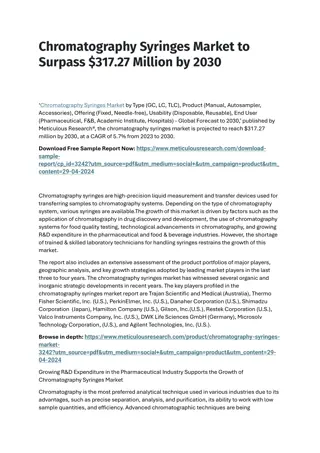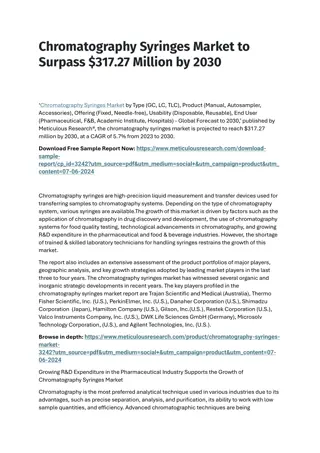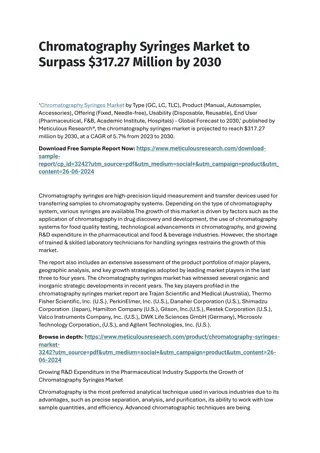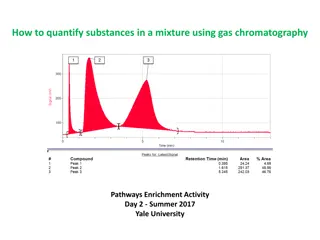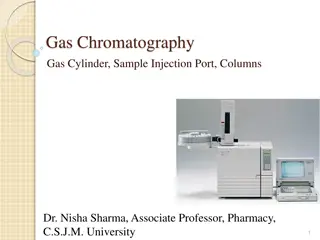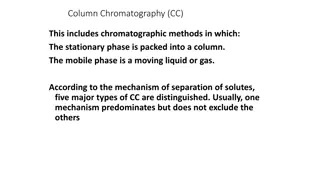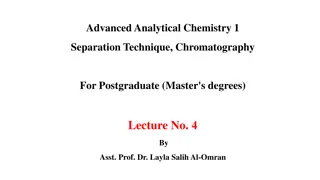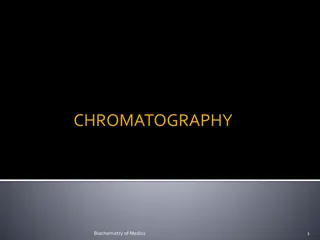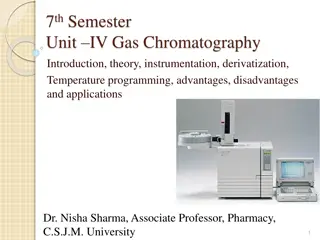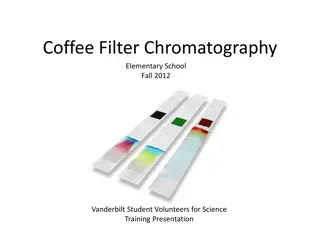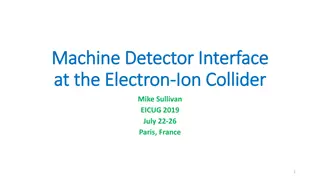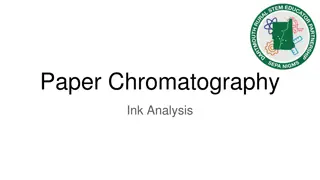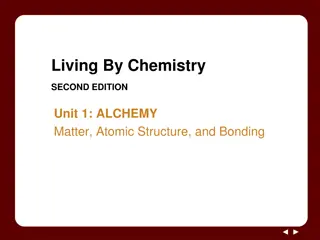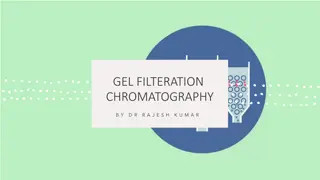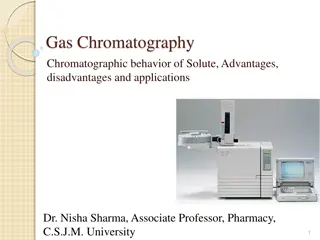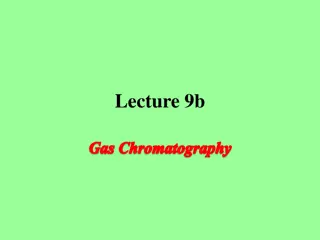Understanding Electron Capture Detector in Gas Chromatography
Gas Chromatography Detectors include the Electron Capture Detector (ECD), which detects ions exiting the chromatographic column by the anode electrode. It is commonly used for halogenated organics like insecticides and pesticides. The ECD works by capturing electrons from the carrier gas, leading to a decrease in current, thereby identifying analytes. Despite its high selectivity, sensitivity, and linearity, ECD has limitations due to its radioactivity and signal range.
Download Presentation

Please find below an Image/Link to download the presentation.
The content on the website is provided AS IS for your information and personal use only. It may not be sold, licensed, or shared on other websites without obtaining consent from the author. Download presentation by click this link. If you encounter any issues during the download, it is possible that the publisher has removed the file from their server.
E N D
Presentation Transcript
Gas Chromatography Detectors: Electron Capture detector and Mass Spectrometry detector Dr. Nisha Sharma, Associate Professor, Pharmacy, C.S.J.M. University 1
Electron Capture Detector ECD detects ions in exiting from the gas chromatographic column by the anode electrode. 3H or 63Ni emits particles. Ionization : N2 (Nitrogen carrier gas) + (e) = N2+ + 2e These N2+establish a base line X (F, Cl and Br) containing sample + (e) X- Ion recombination : X- + N2+ = X + N2 The base line will decrease and this decrease constitutes the signal. Insecticides, pesticides, vinyl chloride, and fluorocarbons 2
Electron Capture Detector (ECD): Carrier gas (and analyte) passes over -emitter, resulting in ionization and e- production This Produces current between electrodes In the presence of other compounds (especially halogens, etc.) electrons are captured, causing decrease in current Most commonly used for halogenated organics (insecticides, etc.) As an analyte flows through Ni-63 source, electron capture is possible by electron-withdrawing species: A + e- => A- Current decreases as a result of e- capture by analyte. This is one of the few instances in which a signal is produced by a decrease in detectable phenomenon. 3
Electron capture detector Column effluent is passed b/w 2 electrodes One electrode has radioisotope on its surface that emits energy electrons ( particles as it decays) These electrons are bombarded with carrier gas N2 Results in formation of +ve ions, radicals, thermal electrons Process is very rapid < 0.1 sec. When Voltage is applied e- capture cell collect the thermal e- produce ve ions of large masses Rate of combination b/w ve & +ve ions is greater than thermal e- & +ve ions se in detector current due to removal of thermal e- in presence of e- capturing compounds measured 4
Electron capture detector Radio active sources: tritium adsorbed in titanium or scandium & Nickel 63 as foil placed on interior of cathode chamber Ni-63: 400 C Linearity of ECD- cell design, composition of carrier gas, method of applying P.D. to collect thermal e- ECDs - high selectivity, sensitivity towards certain organic species with electronegative functional groups. However, the detector has a limited signal range & is potentially dangerous owing to its radioactivity. In addition, the signal-to-noise ratio is limited by radioactive decay & presence of O2 within the detector. 5
ECD cathode electode 6
Mass Spectrometry Detectors Most powerful of all detectors. Scans the masses continuously throughout the separation. When sample exits column, it passes through transfer line into the inlet of detector. The sample is then ionized & fragmented by electron-impact ion source. During this process, the sample is bombarded by energetic electrons which ionize the molecule by causing them to lose an electron due to electrostatic repulsion. Further bombardment causes the ions to fragment. 7
Mass Spectrometry Detectors The ions are then passed into a mass analyzer where the ions are sorted according to their m/z value, or mass-to-charge ratio. Most ions are only singly charged. The Chromatogram will point out the retention times and the mass spectrometer will use the peaks to determine what kind of molecules exist in mixture. mass spectrum of water with the absorption peaks at the appropriate m/z ratios. 100% Water molecule in which H is removed by fragmentation 10 20 8
Mass Spectrometry Detectors One of the most common types of mass analyzer in GC/MS is the quadrupole ion-trap analyzer, which allows gaseous anions or cations to be held for long periods of time by electric and magnetic fields. A simple quadrupole ion-trap consists of a hollow ring electrode with two grounded end-cap electrodes as seen in figure. Ions are allowed into the cavity through a grid in the upper end cap. A variable radio-frequency is applied to the ring electrode and ions with an appropriate m/z value orbit around the cavity. As the radio-frequency is increased linearly, ions of a stable m/z value are ejected by mass-selective ejection in order of mass. Ions that are too heavy or too light are destabilized and their charge is neutralized upon collision with the ring electrode wall. 9
Mass Spectrometry Detectors Emitted ions then strike an electron multiplier which converts the detected ions into an electrical signal. This electrical signal is then picked up by the computer through various programs. As an end result, a chromatogram is produced representing the m/z ratio versus the abundance of the sample. GC/MS units are advantageous because they allow for the immediate determination of the mass of the analyte and can be used to identify the components of incomplete separations. They are rugged, easy to use and can analyze the sample almost as quickly as it is eluted. The disadvantages of mass spectrometry detectors are the tendency for samples to thermally degrade before detection and the end result of obliterating all the sample by fragmentation. 10
GC/MS system. Arrangement of the poles in Quadrupole and Ion Trap Mass spectrometers 11
Other Detectors: Atomic Emission detector Microwave induced plasma, grating monochromator, diode array detector Thermionic Detector Photo ionization detector GC Chemiluminiscence detectors 12



